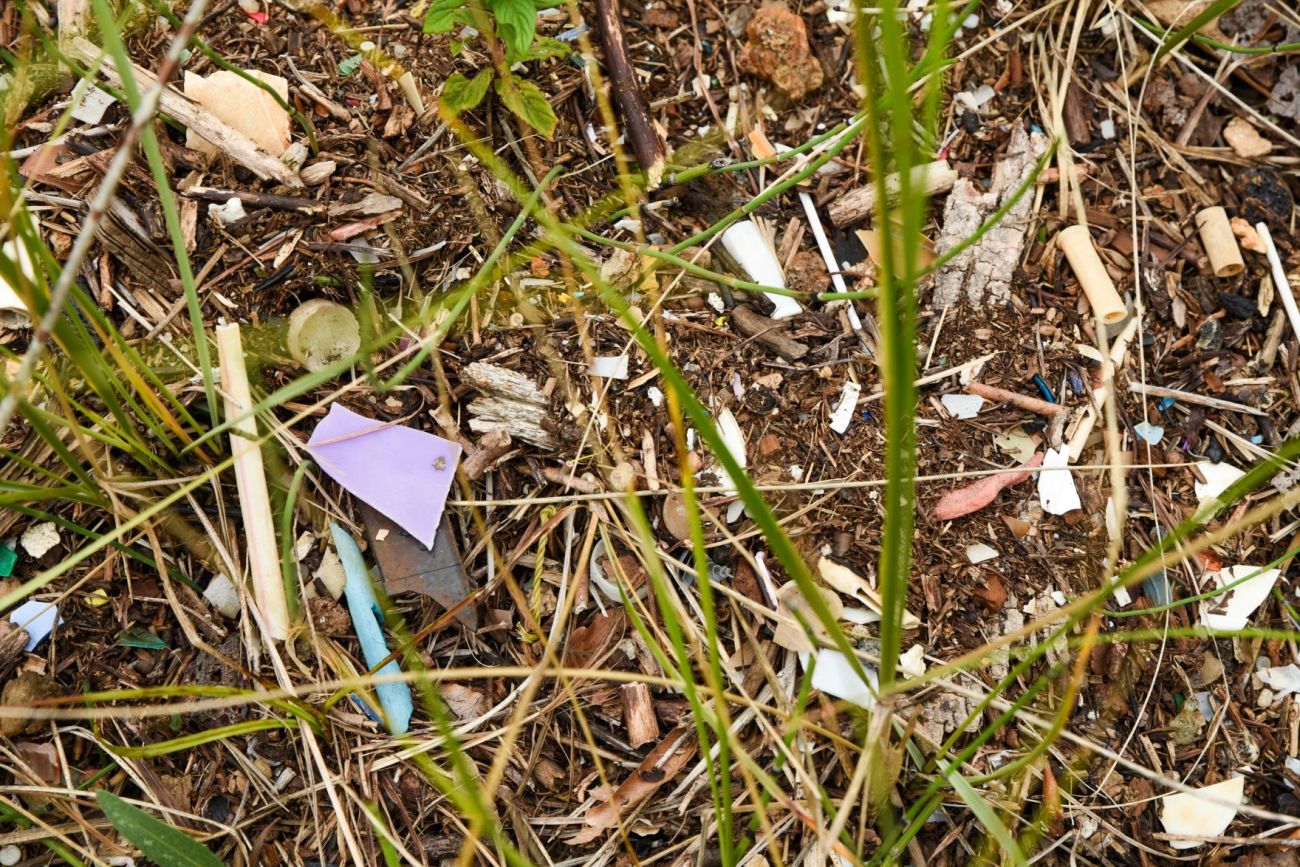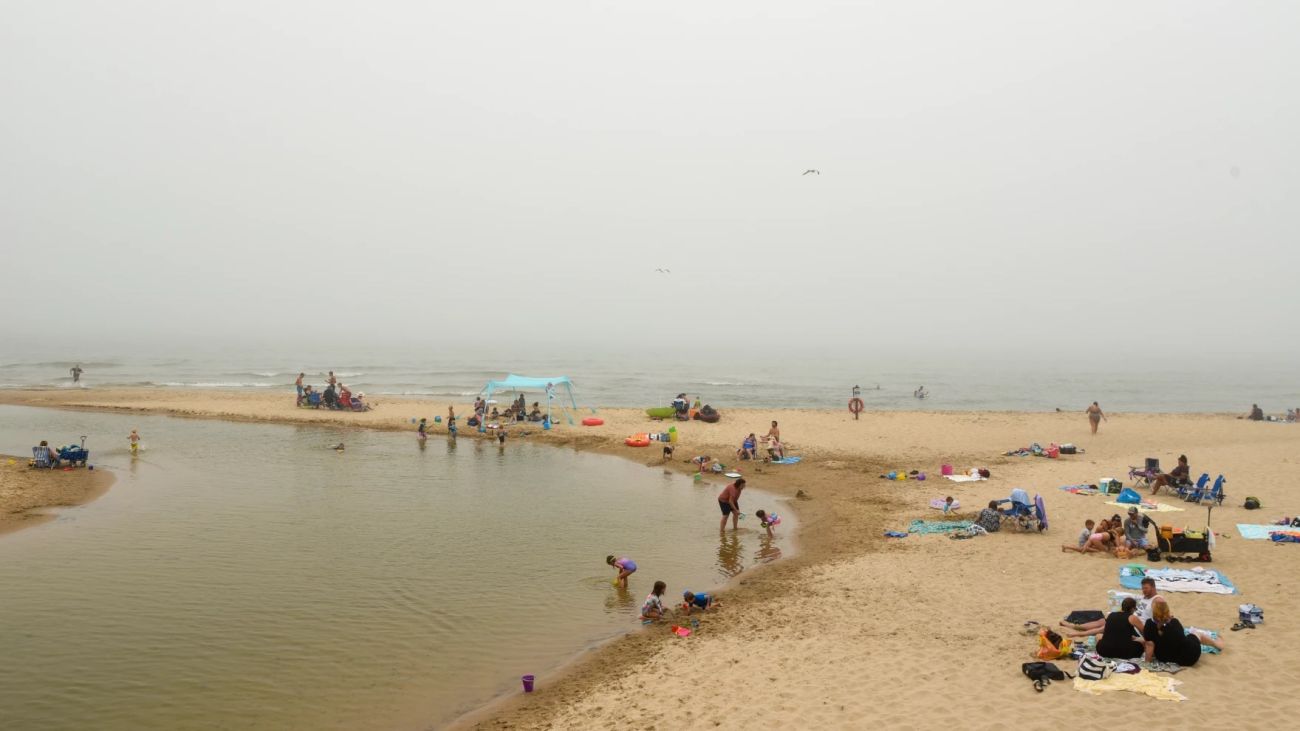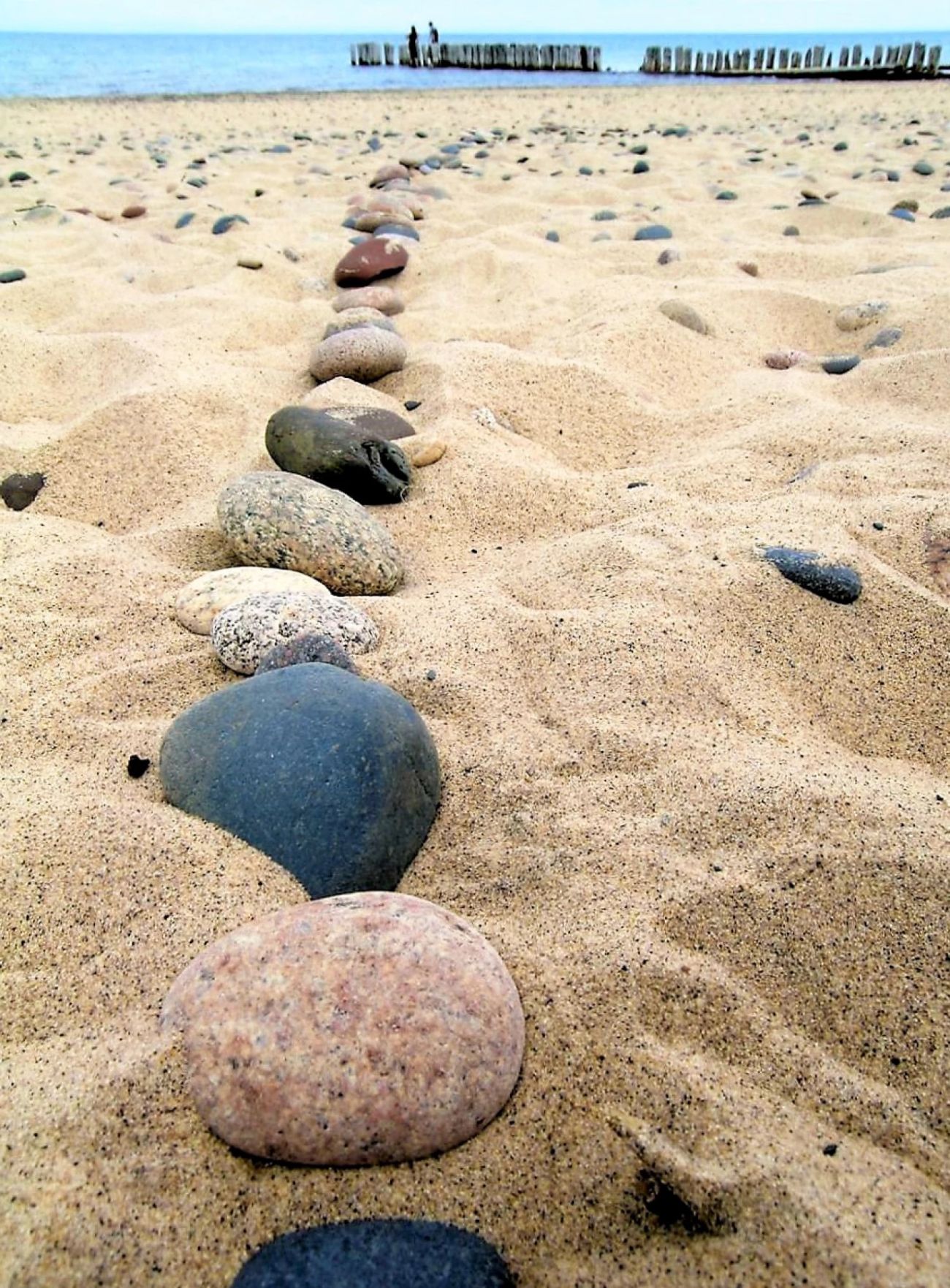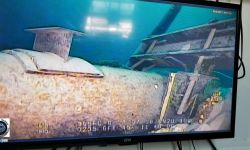What's being done about plastic trash getting into the Great Lakes?

Across Michigan temperatures were hovering around 90 degrees, but at Duck Lake State Park next to Lake Michigan the temperature was in the mid-70s with a breeze. There was fog hanging over the lake, but people were splashing and playing in the waves under the yellow flag, cautioning swimmers.
I wasn't at the park for that kind of fun. I was there to look for bits of plastic trash. Duck Lake is connected to Lake Michigan by a small channel. When the lake rises or if a storm surges, it carries plastic debris through the channel. When the water drops, some of that plastic is left on the shoreline or gets caught in the vegetation.

A couple of years ago, I visited as a group of volunteers picked up all kinds of plastic. There was some plastic there during my visit this time, but it's definitely not as bad as it was two years ago.
That might be because the Lake Michigan water level is not quite as high or it could be because of those diligent volunteers working to clean up plastic trash.
This article is part of The Great Lakes News Collaborative, which includes Bridge Michigan, Circle of Blue, Great Lakes Now at Detroit Public Television, and Michigan Radio. It unites newsroom resources to report on the most pressing threats to the Great Lakes and drinking water supplies, including pollution, climate change, and aging infrastructure. The independent journalism is supported by the Charles Stewart Mott Foundation.
Still, plastic trash on Great Lakes beaches and at a state park should not be happening.
Related:
- In Benton Harbor, lead lines are gone but water remains a luxury
- New federal money is the start of an effort to make Great Lakes coasts more resilient
- Consumers’ decision on 13 dams could alter Michigan rivers, towns
It comes from many sources, but often it's because people misplace a straw, or utensils, or throw wrappers on the ground (yes, that still happens). As far as the sheer number of items, cigarette butts and plastic cigar tips top the list, but they're small. Other plastics of all kinds - bottle caps, fast food containers, and many, many unidentifiable pieces of broken plastic - make up the bulk of the plastic that's picked up.

Dan Todd and his wife occasionally visit the Lake Michigan beach at Duck Lake State Park. Although they were there for recreation, they’d already picked up a couple of pieces of plastic when I stopped to talk to them. Todd, pulled some plastic from his pocket to show me what he found during this visit. He said he doesn’t feel that he finds quite as much as he used to find, but added with a grin, “I don’t have the data to back that up.”
South of the Duck Lake State Park, Jackson Riegler meets me on a Muskegon beach. He joins volunteers, picking up plastic trash from beaches. He said that plastic trash eventually can be processed at a textile plant to make synthetic fabric. Riegler said that he uses it in his line of clothing.
“I saw the Patagonia model where they were using plastic waste into the production of clothing and wanted to explore the opportunity in the U.S. (I) wasn't seeing anyone in the U.S. doing that,” he explained
While he was still in high school, Riegler created an apparel company that used shirts manufactured from synthetic fabric made from recycled plastic. He designs logos and prints them. He calls his company Oshki.
“Which means fresh and Native American Ojibwa,” he explained.
From high school, Riegler attended the University of Michigan and learned a lot about closed loop economies. He wants that for his company. He works with a polyester fabric manufacturer in North Carolina who buys from recycling centers, including some in Michigan.
“We do beach cleanups along the Great Lakes, mostly in West Michigan. And then that plastic is brought to the recycling centers to then be a part of that waste stream,” Riegler said.
But, Riegler said he wishes there wasn’t such a steady supply of plastics washing up on Great Lakes beaches

Plastic pollution is a major concern. Because of the sun and wave action, those bits of plastic break down and become microplastics. Studies over the last few years have documented concentrations of microplastics in fish, in mussels, birds, frogs, drinking water, and Great Lakes beer. And, yes, there are likely microplastic fibers in you.
This month two studies on plastic waste in the Great Lakes were published in the Canadian Journal of Fisheries and Aquatic Sciences.
One study was about assessing the risks of microplastics.
“We began thinking about how microplastics should be better managed or how they could be managed in the Great Lakes,” said Eden Hataley, a Ph. D. student at the University of Toronto and a co-author of both of the studies.
Right now, there’s not an adequate effort.
The second study determined researchers don’t yet have a good handle on microplastics. They did a lot of data mining from the studies of plastics and microplastics in the Great Lakes. Much of the time, scientists are not measuring things in the same way.
“Primarily looking at what concentrations we're seeing, where we're seeing those concentrations in water, sediment, biota, what methods researchers are using to measure microplastics in these different matrices,” Hataley said.
It’s difficult to compare and contrast, when researchers use different methods to determine the levels of plastic contamination.
In both studies, the authors advised that it would be helpful if a bi-national agency would give some direction.
The researchers think the quickest way to get things rolling is to amend the Great Lakes Water Quality Agreement between Canada and the U.S.
So the authors of those two studies formally petitioned policy makers to include microplastics as a chemical to be regulated.

The International Joint Commission (IJC) monitors whether Canada and the U.S. are complying with the Great Lakes Water Quality Agreement. It makes recommendations on policy changes to the U.S. and Canadian governments.
Matthew Child is a physical scientist with the IJC. He thought the two studies were helpful. He saw them as affirming the direction the IJC began to examine in 2016. He said before the IJC can make recommendations to the two federal governments, they need a lot more hard data.
“For some, perhaps a rather boring topic of standardizing monitoring methods (is needed) so you can compare the results across jurisdictions, across labs, what's being measured and counted.”
And with that, a case might be made to include microplastics as a “chemical of concern.” That would allow more to be done than just responding to plastics and microplastics in the lakes.
“It's a much more effective strategy to prevent plastics getting into the lakes and into the environment in the first instance than it is to deal with the legacy impacts of those plastics once they get into the environment,” Child said.
Canada has already banned several kinds of single-use plastics such as shopping bags, food service plastic boxes and polystyrene foam –often incorrectly called Styrofoam- and those plastic rings that that hold your six pack together.
Jackson Riegler with Oshki is all in favor of reducing unnecessary use of plastic. But until then, the estimated 22 million pounds of plastic getting into the Great Lakes each year is still washing up on the beaches.
“Ninety percent of Great Lakes plastic actually ends up on beaches. So because of that, it's much more of a grassroots effort. That has to be the approach of the issue. So all the communities in the Great Lakes region have to do their part,” Riegler said.
And it’s possible you might find some of that plastic becomes the fabric in an Oshki shirt you wear someday.
Michigan Environment Watch
Michigan Environment Watch examines how public policy, industry, and other factors interact with the state’s trove of natural resources.
- See full coverage
- Subscribe
- Share tips and questions with Bridge environment reporter Kelly House
Michigan Environment Watch is made possible by generous financial support from:
Our generous Environment Watch underwriters encourage Bridge Michigan readers to also support civic journalism by becoming Bridge members. Please consider joining today.
See what new members are saying about why they donated to Bridge Michigan:
- “In order for this information to be accurate and unbiased it must be underwritten by its readers, not by special interests.” - Larry S.
- “Not many other media sources report on the topics Bridge does.” - Susan B.
- “Your journalism is outstanding and rare these days.” - Mark S.
If you want to ensure the future of nonpartisan, nonprofit Michigan journalism, please become a member today. You, too, will be asked why you donated and maybe we'll feature your quote next time!






